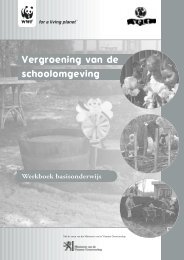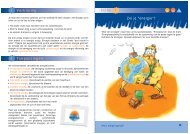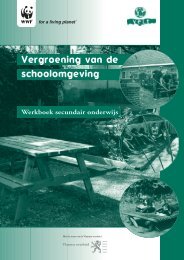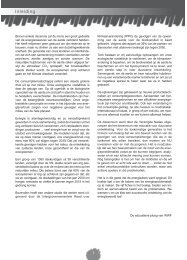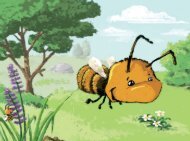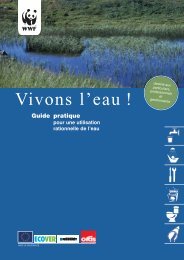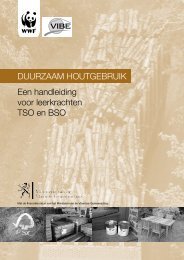Create successful ePaper yourself
Turn your PDF publications into a flip-book with our unique Google optimized e-Paper software.
Recensement des actions de stockage de l’eau en amont des bassins hydrographiques<br />
drained, dried and exploited during the last centuries. Leafy forests have been replaced<br />
by conifer forests, more economically profitable. That’s why an alternative soil usage<br />
is immediately needed to increase the storage capacity. Conifer forests should give way<br />
to leafy forests and a wider space should be dedicated to peat bogs to allow their<br />
restoration. Fitting-outs in the forest pathways can favour the flow slowdown.<br />
Transition from intensive agriculture and breeding to more extensive farms would lead<br />
to the re-dynamization of the previously exploited humid areas.<br />
5. The experiments collection<br />
To obtain a satisfying result, it is necessary to multiply those soil modifications and to<br />
increase the adsorption surfaces. The collection we conceived during this training<br />
course shows that examples of actions exist in the field of the storage at source and that<br />
it is possible to multiply them at the local level with help of every actor involved.<br />
Departing from the <strong>WWF</strong> network, our research has quickly widened to other<br />
European, national (France, Great-Britain, Germany…) and regional projects.<br />
Following contacts making, meetings and visits in the field, twelve types of land<br />
settlement have been reviewed across different countries. These techniques can serve<br />
as example and inspiration for future fitting-outs increasing water retention and storage<br />
upstream from the rivers. These twelve “techniques” can be split up into several<br />
categories:<br />
• Worksheet n°1 “Drainage ditches filling”, worksheet n°2 “Water retentions”<br />
and worksheet n°3 “Retentions thresholds” essentially refer to the humid areas<br />
and particularly to the high peat bogs as those that can be seen in the Hautes-<br />
Fagnes.<br />
• Other techniques are related to small catchment areas, which can’t accept<br />
excess water too important. This category contains worksheets n°4 “Transverse<br />
hedges”, n°5 “Temporary retentions”, n°6 “Mountainside benches”, n°7<br />
“Transverse ditches” and n°8 “Vegetalized or weeded bands”.<br />
• A third group refers to the fitting-outs that can be realised both in humid areas<br />
and on small catchment areas (worksheet n°9 “Woods management”, worksheet<br />
n°10 “Extensive pasture” and worksheet n°11 “Complementary ditches and<br />
other dale-bottoms fitting-outs”).<br />
• Worksheet n°12 entitled “Road ballasts and forests paths” reviews the works<br />
that can be set up near forest roads and paths.<br />
In this work, we have reviewed various and original experiments conducted by<br />
different organisations. The different land settlements have been chosen considering<br />
their reproducibility on most of the catchment areas in Europe.<br />
Some experiments reviewed in this collection are unique and haven’t yet been the<br />
object of a scientific monitoring aiming at confirming the realisation of their<br />
objectives. That’s why it will be needed to consider with caution the information<br />
provided here through the twelve worksheets. Indeed, this document isn’t a technical<br />
guide for the building of the different land settlements. So through the worksheets, the<br />
reader will note that the pieces of information provided stay superficial considering the<br />
purely technical and scientific points of view. It is indeed about allowing the great<br />
majority of people to understand each worksheet and by the way sharing and<br />
discussing their content, whatever could be their personal training or role in the<br />
realisation of a considered land settlement. Finally, we don’t want here to give strict<br />
directives through this document, but rather to propose a basis for reflection, debate<br />
and consciousness.<br />
3




